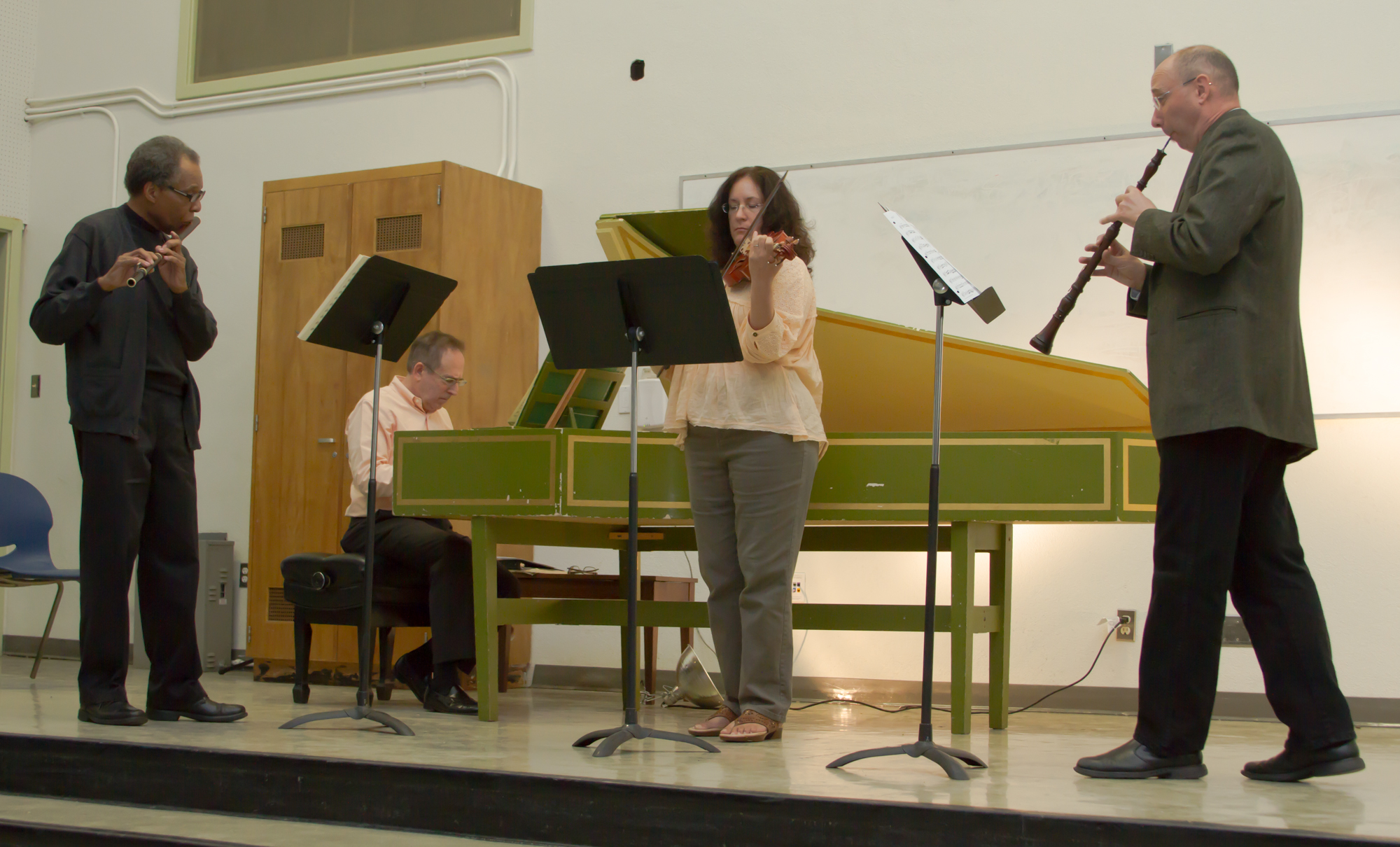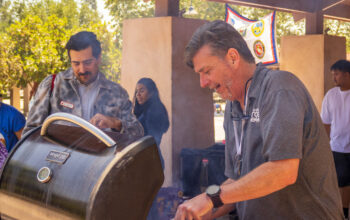The Los Angeles Baroque Players cut through a dry autumn afternoon like a smooth breeze on Oct. 2, performing a number of classical compositions in MUS 3400, using instruments of time-honored tradition.
The quartet, comprised of baroque flute player Anthony Brazier, baroque violin player Adriana Zoppo, baroque oboe player Paul Sherman, and harpsichord player Jeffrey Lavner, took the stage with momentous presence comparable to 16th century instrumentalists.
Host of the Thursday Concert Series and adjunct music instructor James Bergman paid his respects to the group that performs each semester, and begin the show with a little explanation about the type of music displayed for the audience.
“As music has changed overtime, the instruments have changed over time,” Bergman said. “Today we’re going to hear some of the old instruments.”
The most basic definition of Baroque style music is classic Western Art that came just before the Renaissance Era. Baroque instruments focus mainly on tonality and fewer keys, while more contemporary versions of these instruments focus on accentuation and numerous keys to stand out in orchestra environments.
By using fewer keys, the Baroque players can dictate the emotion of each instrument without the need of an entire orchestra.
Baroque oboe player Paul Sherman went into more detail about how the emotion is influenced by the pauses and breaks in Baroque compositions.
“The instruments are quite different, and the music is quite different as well,” Sherman said. “There is a lot of pause for emotion.”
“The idea for the audience is to either throw tomatoes, or clap wildly,” Sherman jokingly added.
Ironically it turned out most of the audience misinterpreted that line, because they immediately started clapping after the first pause in the composition, almost completely interrupting the performance.
After the group had finished their first musical piece, a timeless Baroque piece titled “Sonata IV op.34” by Joseph Boudin de Boismortier, it was apparent that most of the audience had never heard this style of music before.
Even still, the novice crowd was more than gratuitous, giving ovations after every composition with some of the audience humming and even tapping there feet along to the music.
The group followed the Sonata with four more compositions, with each member of the group explaining a little bit about their instrument before playing a new piece.
Baroque flute player Anthony Brazier explained the main differences between modern and baroque flute playing styles.
“The [baroque] flutes were actually softer,” Brazier said. “The modern flute was invented to cut through live orchestra.”
Baroque music was often played in open environments with small groups of musicians who memorized there notes rather than reading sheet music due to the limited choice of keys.
This unique niche of classical music offered concert-goers a little taste of tradition as well as a subtle mix of variations, tone changes, and passionate emotion.
The upcoming Thursday Concert Series will feature the dynamic Eshagi brothers, performing Persian compositions with specialty percussion instruments on Oct. 9 in MUS 3400.




